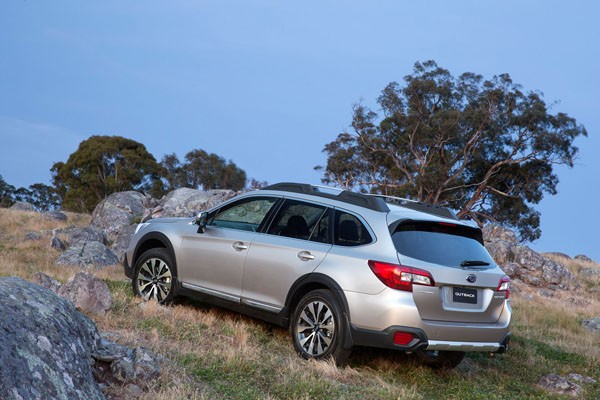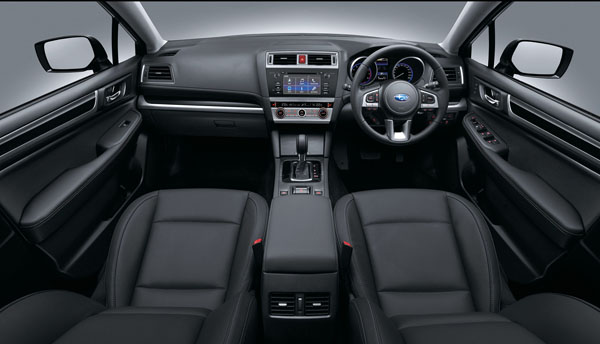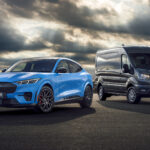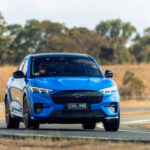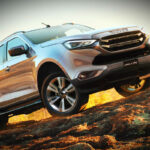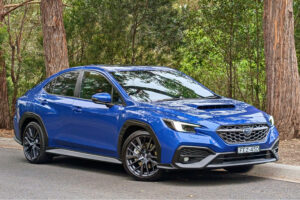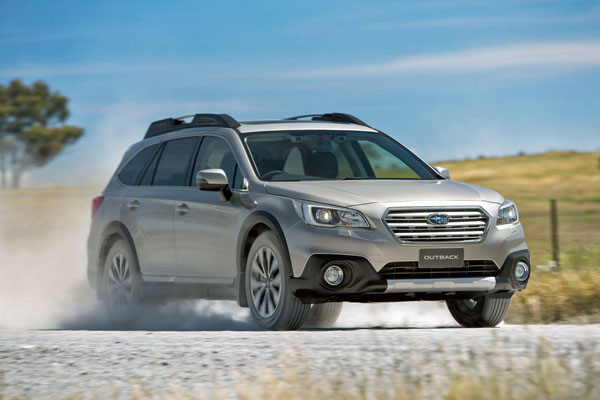
Car interiors rarely feature in large print when new models are launched. Body shapes, engine sizes, new gearboxes, ride and handling tend to steal the limelight. That is of course unless the old model copped a bit of flak for its interior. Which brings us to the 2015 Subaru AWD Outback launched this week in Australia.
For some time now Subaru Outback has been criticised for having below par interiors – hard plastics, ordinary ergonomics and user-unfriendly technology that lets down the rich mechanical engineering for which Subaru is highly respected.
The 2015 Outback addresses these issues. Yes, there has also been some serious tweaking of the 2.5 and 3.6-litre boxer engines, and Outback now comes standard with a clever CVT auto transmission, one which we believe is the best in the business.
The all-new body is longer and wider giving more boot space and rear seat hip room – enough for three adults. In addition, Subaru took a butcher’s knife to pricing with Outback prices being slashed by as much as $10,000 for the 3.6R.
This is a move that has one aim for the six-cylinder Outback 3.6R: to take up where Commodore, Falcon and Territory leave off in the next couple of years. The current Outback 3.6R is $57,990 while the 2015 model is $47,990. This is despite a raft of the latest equipment being added.
STYLING
The new AWD Outback retains a similar look front and rear to the outgoing model, but it has a new shoulder line that gives the vehicle’s profile a more stylish, modern appearance. The front overhang is still a little long for serious off-road work, but designers have angled the overhang to an extent where owners may be surprised just how capable the Outback is, without causing any underbody damage.
The interior is where Outback now shines. Gone are the hard plastics, the user-unfriendly ergonomics, yesterday’s technology, replaced by a classier design, soft plastic, flashes of excellent faux timber and metal highlights that give the cabin an excellent ambience.
Add to this a simple, yet usable centre stacker, comfortable and supportive seats and new media technology that drags the car out of the dark ages. Outback is indeed an all-new proposition.
In particular we like what the designers have done to create a lighter, more airy cabin. This has been achieved by moving the a-pillars forward to create a birds-eye view ahead that both adds to safety and opens up the cabin.
Another huge step forward for Outback is the reduction of NVH (noise, vibration, harshness) in the cabin. Sound deadening around the firewall has reduced engine noise to a bare minimum and road noise is barely audible apart from coarse road surfaces and gravel, where any car suffers noise intrusion. On so-called normal surfaces we liken Outback to some of the high-priced European marques with a whisper quiet cabin.
Those into technology will appreciate the touch-operated sat/nav and audio systems that can be operated like a tablet or smartphone – just spread your fingers and increase the size on screen. Two interiors are available, sporty black or a classy new ivory.
Every new Outback 2.5 and 3.6-litre variant also comes with Subaru’s excellent EyeSight driver assist system which is active in avoiding nose to tail crashes in particular, but also other impacts or at least reducing the impact. The technology is not yet available in diesel variants, but Subaru engineers say this is being worked on.
The technology brakes the car when a potential crash is detected, when for example the driver is distracted. In addition, Outback now has torque vectoring which brakes the inside wheel when cornering and adds torque to the outside wheel to substantially reduce understeer. The same technology was added to new Subaru Impreza WRX and WRX STi early in 2014. Both new Outback and Liberty have a five-star ANCAP safety rating. The cars go on sale in January.
ENGINES
The 2.5i naturally aspirated, DOHC, four-cylinder petrol develops 129 kW of power at 5800 rpm and 235 Nm of torque at 4000 rpm. The 3.6R DOHC flat-six is also naturally aspirated and puts out 191 kW at 6000 rpm and 350 Nm of torque at 4400 rpm. This engine underwent extensive upgrading that saw power up by 62 per cent and torque by a massive 115 Nm. The last engine option, the 2.0 diesel is turbocharged and presents with 110 kW at 3600 rpm and 350 Nm of torque between 1600 and 2800 rpm.
DRIVING IMPRESSIONS
At launch we drove the Outback 2.0D (diesel) Premium and the Outback 3.6R variants, both with the new CVT auto. Step into the Outback and changes are immediately obvious: a far more refined cabin area, uncluttered, simple to use and forward vision that defies the vehicle’s low-slung body.
The diesel is petrol-quiet. No rattle, no noise and even under full throttle it is impossible to pick this as an oil-burner, apart from looking at the tacho or hearing the low-rev changes via the CVT steps. You need to open the bonnet to confirm what the badging tells you: it’s a diesel.
Off-the-mark performance is solid, but not quick. Outback’s weight ensures the diesel earns its keep. At cruising speed of 110 km/h the car is absolutely quiet inside, with no mechanical audio at all and little road or wind noise off the wing mirrors. This variant has 17-inch wheels that tended to squeal a bit under hard, fast, tight cornering, but did not feel like they were about to give and the body exhibited little roll. Long sweeping bends were taken easily with the body sitting flat and giving excellent passenger comfort.
We took both variants on some relatively testing steep off-road tracks, turning on the X-Mode. Outback is surprisingly adept off-road and the 213 mm clearance is significant for what many would call a soft-roader. The hill descent control works well and had us descending at around 4 km/h down steep inclines, while the AWD system prevented any wheel slip when climbing. Impressive for a vehicle designed primarily for on-road driving.
The Outback 3.6R felt more refined than the diesel and it tended to have faster change up steps than the diesel. Both were fitted with steering wheel paddles for manual input which really comes in handy on steep descents for engine braking. We felt a little more at home in the 3.6R, but given the pricing of the diesel ($34,490 for the manual and $37,490 for the CVT) we reckon the oil burner will just about walk off showroom floors. It’s a lot of car for under $40,000.
Since it launched in 1995 AWD Subaru Outback has been something of an enigma. Not quite an SUV, not quite a wagon. A jacked up wagon with all-wheel drive. A crossover, not small, and not quite medium. However at the end of its shelf life the older model was showing its age which was reflected in average sales.
Competitors are few, but Volvo’s XC70 and Audi’s Allroad come to mind as low-slung AWD wagons. This is not aimed at the genuine hardcore 4WD market, but at people who get off-road from time to time. With 512 litres of cargo space – up 22 litres – Outback fills the bill as a family sports wagon.
While the spec sheet for Outback just states CVT, this is a new incarnation of the Subaru CVT. If you accelerate normally it acts like a traditional CVT with seamless and smooth acceleration. Push the right boot to the floor and it accelerates hard and then shifts into the next “step” giving the impression of changing gears like a conventional auto. Yet, there are no energy sapping gears to chew fuel and increase emissions.
OUTBACK MODELS AND PRICING
Outback 2.5i CVT: $35,990 (outgoing model $38,990)
Outback 2.5i Premium CVT: $41,490 (outgoing model $43,490)
Outback 2.0D manual: $35,490 (outgoing model $40,490)
Outback 2.0D CVT: $37,490 (outgoing model $42,990)
Outback 2.0D Premium: manual $41,490 (outgoing model $43,490)
Outback 2.0D Premium CVT: $43,490 (outgoing model $45,990)
Outback 3.6R: $47,990 (outgoing model $57,990)




